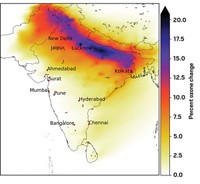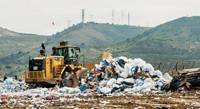Advertisement
Grab your lab coat. Let's get started
Welcome!
Welcome!
Create an account below to get 6 C&EN articles per month, receive newsletters and more - all free.
It seems this is your first time logging in online. Please enter the following information to continue.
As an ACS member you automatically get access to this site. All we need is few more details to create your reading experience.
Not you? Sign in with a different account.
Not you? Sign in with a different account.
ERROR 1
ERROR 1
ERROR 2
ERROR 2
ERROR 2
ERROR 2
ERROR 2
Password and Confirm password must match.
If you have an ACS member number, please enter it here so we can link this account to your membership. (optional)
ERROR 2
ACS values your privacy. By submitting your information, you are gaining access to C&EN and subscribing to our weekly newsletter. We use the information you provide to make your reading experience better, and we will never sell your data to third party members.
Pollution
China’s regional clean air efforts can hike pollution elsewhere
Emission control policies shift emission sources to other areas
by Cheryl Hogue
April 24, 2019
| A version of this story appeared in
Volume 97, Issue 17

Regional clean air efforts in China’s national capital region can boost air pollution in other parts of the country, according to a new study (Sci. Adv., 2019, DOI: 10.1126/sciadv.aav4707).
An international team of researchers led by Delin Fang of Beijing Normal University used computer models to examine the effects of policies to reduce particulate matter with diameter of 2.5 µm or less in the cities of Beijing and Tianjin and in Hebei Province. The three areas, considered collectively to be the national capital region, often suffer from extremely high levels of particulate matter pollution.
The researchers found that emission control policies in the region would shift polluting industries and power generation out of the area and into other parts of China, especially neighboring provinces. This, in turn, would raise particulate matter pollution levels in those provinces. And wind potentially could carry emissions from these areas to the national capital region, canceling out part or all of the region’s efforts to cut air pollution, the researchers say.
They also point out that many of the power plants and factories outside of the capital region are older and technologically inferior, especially when it comes to efficiency and emissions controls. So shifting activity to those facilities would likely lead to a net increase in total pollution and greenhouse gas emissions, the researchers say.





Join the conversation
Contact the reporter
Submit a Letter to the Editor for publication
Engage with us on Twitter